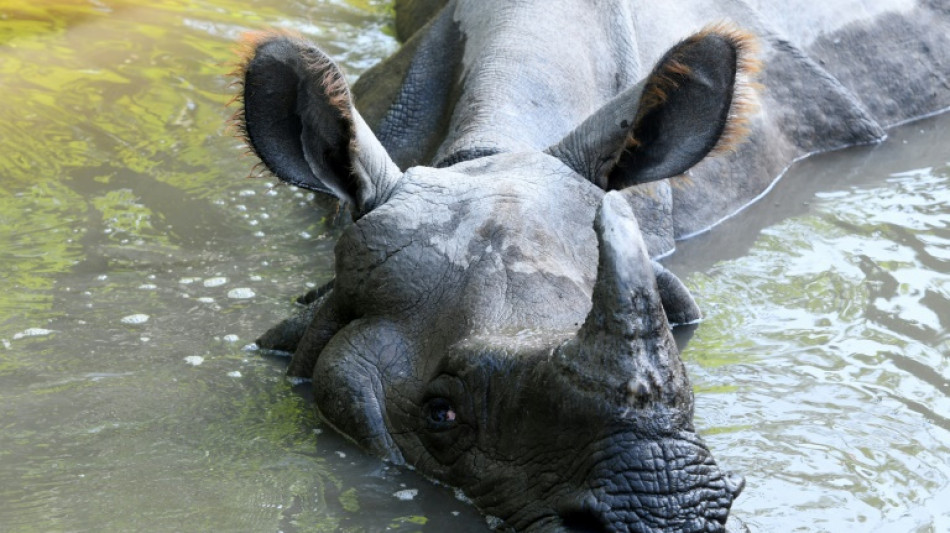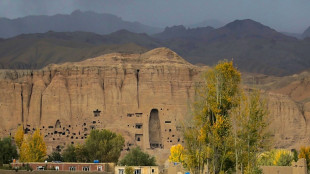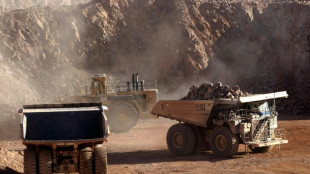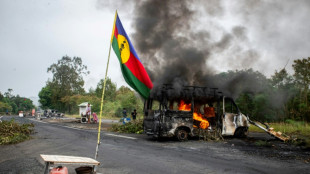
-
 Strikes pound Gaza as Israel voices 'duty' to expand Rafah incursion
Strikes pound Gaza as Israel voices 'duty' to expand Rafah incursion
-
Russia tries playwright and director on terror charges

-
 Iran mourns president Raisi's death in helicopter crash
Iran mourns president Raisi's death in helicopter crash
-
Attack on tourists rocks fledgling Afghanistan tourism sector

-
 Paralympics should put disability back on global agenda, says IPC chief
Paralympics should put disability back on global agenda, says IPC chief
-
South Africa's top court strikes Zuma from ballot

-
 Crunch time looms for BHP's bid buy Anglo American
Crunch time looms for BHP's bid buy Anglo American
-
Kane to face old club Spurs for first time in Seoul

-
 Markets rise as traders cheered by China property plan
Markets rise as traders cheered by China property plan
-
Black farmers in Brazil changing views on coffee production

-
 Iran's President Raisi declared dead in helicopter crash
Iran's President Raisi declared dead in helicopter crash
-
Australia police arrest 554 in domestic violence crackdown

-
 South Korea, Britain host AI summit with safety top of agenda
South Korea, Britain host AI summit with safety top of agenda
-
New president Lai vows to defend Taiwan's democracy

-
 Forever fad: Rubik says his cube 'reminds us why we have hands'
Forever fad: Rubik says his cube 'reminds us why we have hands'
-
Trump eyes witness stand as trial draws to a close

-
 Ryanair annual profit jumps on higher demand, fares
Ryanair annual profit jumps on higher demand, fares
-
High-priced Cummins, Starc face off as IPL enters playoffs

-
 Iran media says President Raisi died in helicopter crash
Iran media says President Raisi died in helicopter crash
-
Dominican Republic President Abinader re-elected to 2nd term

-
 New Taiwan president Lai hails 'glorious' democracy
New Taiwan president Lai hails 'glorious' democracy
-
New Caledonia separatists defy French efforts to unblock roads

-
 Timberwolves knock out defending champion Nuggets, Pacers oust Knicks
Timberwolves knock out defending champion Nuggets, Pacers oust Knicks
-
Trump biopic hits Cannes Film Festival

-
 Iran President Raisi's helicopter found, 'no sign of life'
Iran President Raisi's helicopter found, 'no sign of life'
-
Three talking points ahead of 2024 French Open

-
 'Haikyu!!': Comic heroes fuel Japan Olympic volleyball manga mania
'Haikyu!!': Comic heroes fuel Japan Olympic volleyball manga mania
-
Timberwolves rally to knock defending champion Nuggets out of NBA playoffs

-
 London court set to rule on Julian Assange extradition
London court set to rule on Julian Assange extradition
-
Business and Bollywood votes in India election

-
 Pope calls anti-migrant attitudes at US border 'madness'
Pope calls anti-migrant attitudes at US border 'madness'
-
Mexico aims to be big economic winner from US-China tensions

-
 Uncertain future for thousands after deadly Brazil floods
Uncertain future for thousands after deadly Brazil floods
-
Schauffele makes the putt of his life for first major win

-
 Wirtz returns to help unbeaten Leverkusen chase history
Wirtz returns to help unbeaten Leverkusen chase history
-
Search for Iran's President Raisi after helicopter goes missing

-
 DeChambeau's powerful putting has him excited for US Open
DeChambeau's powerful putting has him excited for US Open
-
Taiwan to swear in new president as China pressure grows

-
 Atalanta can end 61-year wait for trophy in Europa League final
Atalanta can end 61-year wait for trophy in Europa League final
-
Schauffele birdies final hole to capture PGA for first major win

-
 Guardiola casts doubt over long-term Man City future
Guardiola casts doubt over long-term Man City future
-
Hollywood icons Costner and Demi Moore make Cannes comeback

-
 Pacers shoot down Knicks to reach NBA Eastern Conference finals
Pacers shoot down Knicks to reach NBA Eastern Conference finals
-
Schauffele birdies final hole, captures first major at PGA Championship

-
 McLaughlin powers to Indy 500 pole in all-Penske front row
McLaughlin powers to Indy 500 pole in all-Penske front row
-
Monaco footballer tapes over LGBTQ badge

-
 Korda wins sixth LPGA title of year with win at Liberty National
Korda wins sixth LPGA title of year with win at Liberty National
-
Pacers put on shooting show to down Knicks, reach NBA Eastern Conference finals

-
 US envoy touts 'potential' of Israel-Saudi deal in Netanyahu talks
US envoy touts 'potential' of Israel-Saudi deal in Netanyahu talks
-
Dominicans vote for president in poll overshadowed by Haiti crisis


Nepal's nature threatened by new development push: conservationists
Nepali conservationists condemned on Thursday new regulations permitting hydropower and hotel projects in protected nature reserves, saying they threatened to damage the habitats of tigers and other endangered animals.
A fifth of the Himalayan republic's total lands have been designated as protected areas established to forbid infrastructure projects that could damage the environment.
Nepal has been praised worldwide for combating poachers and conserving wildlife, allowing it to bring several animal species back from the brink of local extinction.
However, the government enacted an ordinance last month allowing it to approve infrastructure projects in national parks, forests and other conservation areas.
"The number of endangered tigers and one-horned rhinos in the country have thrived because of these protected areas as they found a favourable environment," Rampreet Yadav, a wildlife conservationist, told AFP.
"This decision allowing construction of infrastructure will surely impact their habitat."
Yadav, who is also the former chief conservation officer of Chitwan National Park, Nepal's most important conservation area, said the decision was driven by the "vested interests of political leaders".
"We will have nothing to show and give our next generation," he said.
Nepal's protected habitat laws have seen the country triple the local tiger population to 355 since 2010, while the number of one-horned rhinoceros also rose to 752 in 2021 from around a hundred in the 1960s.
It also nearly doubled its forest cover between 1992 and 2016 after rampant logging.
Nepal has been keen to further develop its hydropower industry after a dam-building spree since the turn of the century that has given it an installed capacity of more than 2,600 megawatts.
It signed a deal with India in January to export 10,000 megawatts of hydroelectricity over the next decade to its energy-hungry neighbour.
Tourism is also a major earner for Nepal, which saw a million foreign visitors last year after a post-pandemic bounceback, and investments are being made in hotels and airports to cater to travellers.
Environment ministry spokesperson Badri Raj Dhungana said the new regulations had been introduced to bring a balance between environmental protection and development.
"They will not be constructed in very sensitive areas. We will need a work plan with proper mapping," he said.
But Padma Bahadur Shrestha, a lawyer specialising in litigation aimed at nature protection, said the decision showed the government was set on casting aside environmental concerns in its rush for development.
"It wants to destroy Nepal's biodiversity to make new infrastructure," he said.
L.Janezki--BTB
